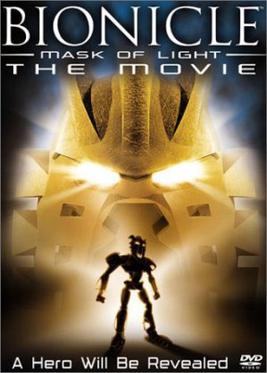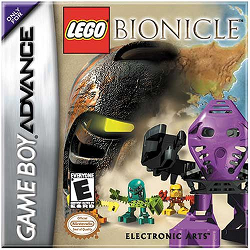Types
Power RoboRider
The Power Lego toy figure resembles a yellow motorcycle. The features present on it include a crane, two plasma cannons that fire two small red LEGO pieces, and a wheel launcher. Both the toy and its corresponding realm are themed off of toxic waste, Power's realm resembling a post-apocalyptic city.
Frost RoboRider
Frost's Lego toy figure resembles a white and grey motorcycle. It also features a wheel launcher and ice launchers that fire poles made out of translucent blue plastic. The toy is themed after ice. Frost's realm is depicted as an arctic tundra with ice-themed obstacles and creatures.
Lava RoboRider
Lava's Lego toy figure is a red motorcycle. Both the figure and its corresponding realm are themed after volcanoes and magma. The toy's features include a wheel launcher and a spinning mechanism with two small axes on it.
Swamp RoboRider
Swamp's Lego toy figure is a teal and green motorcycle. Both Swamp's toy and realm are themed after swamps, hence the name. The toy's features are two katanas and a wheel launcher.
Onyx RoboRider
Onyx's Lego toy figure is a black motorcycle. Both the toy and its realm are themed after rocks. The features on the toy are a wheel launcher and laser cannons, which shoot red translucent poles.
Dust RoboRider
Dust, which is another Lego toy figure, searches for the enemies in the much-dreaded Desert-Realm within the theme of the product line. There are howling sandstorms that are very difficult to navigate through, the terrain is very tough to drive in, and there is always a danger of drowning in quicksand or monster sandstorms. Dust's main enemies are the sand pits. Dust is armed with two spears, and is also armed with a wheel launcher. His colors are tan and grey.
Boss RoboRider
The Boss RoboRider Lego toy figure is depicted as an orange motorcycle. The toy's place in the fictional storyline is unknown. It was the final release for the RoboRiders toyline.
Wheels
Two unique wheels were released on each set, a different color each time, Lego said these wheels had special powers, however no information was ever released on what powers these wheels had, only names: Axer, Blazooka, Chain-Saw, Driller, Dynamite, Flame, Fuel, Grab, Laser, Ninja, Rope, Scout, Skeleton, Stunner, Toxic and Twin-Saw.

Lego is a line of plastic construction toys manufactured by the Lego Group, a privately held company based in Billund, Denmark. Lego consists of variously coloured interlocking plastic bricks made of acrylonitrile butadiene styrene (ABS) that accompany an array of gears, figurines called minifigures, and various other parts. Its pieces can be assembled and connected in many ways to construct objects, including vehicles, buildings, and working robots. Assembled Lego models can be taken apart, and their pieces can be reused to create new constructions.
Lego Technic is a line of Lego interconnecting plastic rods and parts. The purpose of this series is to create advanced models of working vehicles and machines, compared to the simpler brick-building properties of normal Lego.
Bionicle is a line of Lego construction toys, marketed primarily towards 8-to-16-year-olds. The line originally launched in 2001 as a subsidiary of Lego's Technic series. Over the following decade, it became one of Lego's biggest-selling properties, turning into a franchise and being one of the many factors in saving the company from its financial crisis of the late 1990s. Despite a planned twenty-year tenure, the theme was discontinued in 2010, but was rebooted in 2015 for a further two years.

This article lists notable events and releases in the history of the Lego Group.
Lego began in 1932 in the carpentry workshop of Ole Kirk Christiansen, a Danish furniture maker. During the Great Depression, he began to make miniature versions of his products, which inspired him to produce toys. In 1934 the company was named "Lego", a contraction from the Danish phrase "leg godt", meaning "play well".

Galidor: Defenders of the Outer Dimension is a science fiction television series created by Thomas W. Lynch and The Lego Group, and co-produced by CinéGroupe and the Tom Lynch Company in association with YTV. Galidor premiered on February 9, 2002, and ran for twenty-six episodes across two seasons, airing its last episode on August 24, 2002. It had limited reruns on other international networks. The series follows teenager Nicholas "Nick" Bluetooth and his friend Allegra Zane after they are transported to the Outer Dimension, where Nick uses his newfound "glinch" shapeshifting ability to aid resistance efforts against the tyrant Gorm who has conquered the Outer Dimension in search of the hidden realm of Galidor.

A Lego minifigure, often simply referred to as a Lego figure or a minifig, is a small plastic articulated figurine made of special Lego bricks produced by Danish building toy manufacturer The Lego Group. They were first produced in 1978 and have been a success, with over 4 billion produced worldwide as of 2020. Minifigures are usually found within Lego sets, although they are also sold separately as collectables in blind bags, or can be custom-built in Lego stores and on lego.com. While some are named as specific characters, either licensed from already existing franchises or of Lego's own creation, many are unnamed and are designed simply to fit within a certain theme. They are highly customizable, and parts from different figures can be mixed and matched, resulting in many combinations.

Bionicle: Mask of Light, stylized as BIONICLE: Mask of Light — The Movie, is a 2003 animated science fantasy action film based on the Bionicle toyline by Lego, and particularly serves as a direct adaptation to the latter half of the toyline's 2003 narrative. Set in a universe filled with bio-mechanical beings allied with classical element-themed tribes, the story follows two friends from the fire-based village of Ta-Koro on a quest to find the owner of the Mask of Light, a mystical artifact that can potentially defeat Makuta, an evil entity threatening the island.

Lego Space is a science fiction-oriented Lego theme which focuses on astronauts, space colonization, spaceships, and extraterrestrial life. Introduced in 1978, along with Castle and Town, with each of the three themes representing the 'Past' (Castle), 'Present' (Town) and 'Future' (Space). It is one of the oldest and most extensive themes in Lego history, consisting of over 300 individual sets.

Lego Rock Raiders was a Lego theme focused on mining equipment that released in 1999 and 2000. It was the only underground-based Lego theme before Lego Power Miners. The theme, while short-lived, featured sixteen construction sets and numerous story-related media, including three books and a video game.
Lego Sports was a Lego theme that was launched in 2000 and discontinued in 2007. The theme focused on a variety of sports-themed toy sets, including football, basketball and hockey.

Mata Nui Online Game is a 2001 point-and-click adventure browser game developed by Templar Studios to promote the Lego Bionicle line of constructible action figures. The game follows Takua, a villager on the island of Mata Nui, as he explores the island, encountering other villagers and the Toa, heroic elemental warriors, on their quest to defeat the evil Makuta.

Lego Belville was a Lego theme designed to appeal primarily to girls. First introduced in 1994, the theme included multi-jointed doll-like characters that were larger in scale than the traditional Lego minifigure. The toy sets were produced from standard Lego bricks and larger pieces, often in a pink and purple colour scheme, and depicted scenes from fairy tales and fantasy as well as everyday life. The product line was discontinued in 2009. Belville's direct successor is Lego Friends, which was introduced in 2012. Other Lego product ranges that have been designed for girls include Homemaker (1971–1982), Paradisa (1991–1997) and Scala (1997–2001).

Lego Bionicle: Quest for the Toa is a 2001 action-adventure game developed by Saffire and published by Lego Software for the Game Boy Advance. Based on the Lego Group's Bionicle line of constructible action figures, the game follows Takua, a villager on the island of Mata Nui, on a quest to rescue the island's Turaga elders and summon the Toa, heroic elemental warriors destined to defeat the evil Makuta.
Lego World Racers was a Lego theme that centred around two racing teams competing to win the world cup. The first six sets were released in May and June 2010, with an additional three sets being released later in 2010. The theme was discontinued in the same year.
Lego Ninjago is a Lego theme that was created in 2011 and a flagship brand of The Lego Group. It is the first theme to be based on ninjas since the discontinuation of the Lego Ninja theme in 2000. It was produced to coincide with the animated television series Ninjago, which was superseded in 2023 by a new series titled Ninjago: Dragons Rising.

Lego Legends of Chima was a Lego theme that was introduced in 2013 and discontinued in 2015. The product line was based on the storyline of Legends of Chima, a 3D animated television series, which was produced to coincide with the Lego theme. The storyline was set in the fictional realm of "Chima", a fantasy world inhabited by various warring tribes of anthropomorphic animals that battle to collect a substance called "Chi". Alongside the television series and several shorts based on Lego Legends of Chima. The theme also produced a range of associated media, including theme park attractions, video games, and publications.

Lego Agents was a Lego theme that was first introduced in June 2008 after the discontinued Lego Alpha Team theme. The theme was inspired by James Bond as well as various spy movies. The 13 toy sets in the theme's release were split into three waves. In 2009, the theme was re-branded as Lego Agents 2.0. It was discontinued by the end of 2009 and replaced with the Lego Ultra Agents theme in 2014.

Lego Monster Fighters was a Lego theme based on Universal Studios Monsters from the horror fiction genre. The Monster Fighters fight against the Lord Vampyre's monsters while collecting the moonstones. The story takes place in the Monster Realm and it's similar to The Monster Squad film. The theme was first introduced in May 2012. It was eventually discontinued by the end of December 2014. The theme also produced a range of associated media, including theme park attractions, several shorts, video game, app and publications.












